This article was co-authored by Lyssandra Guerra. Lyssandra Guerra is a Certified Nutrition & Wellness Consultant and the Founder of Native Palms Nutrition based in Oakland, California. She has over five years of nutrition coaching experience and specializes in providing support to overcome digestive issues, food sensitivities, sugar cravings, and other related dilemmas. She received her holistic nutrition certification from the Bauman College: Holistic Nutrition and Culinary Arts in 2014.
There are 12 references cited in this article, which can be found at the bottom of the page.
This article has been viewed 15,227 times.
Protein is an important part of your diet. It helps your body build and repair cells. It’s important that people of all ages get enough protein in their daily diet. You can make sure you’re getting the recommended amount of protein by assessing how many calories you consume each day, as well as your activity level. An easy guideline to start is by multiplying your body weight in kg times 0.8, but further adjustments may be necessary after that. If you are pregnant or nursing, you will need to make sure you’re consuming extra protein each day. If you figure out you’re not getting enough protein, you can easily add more to your diet with everyday foods.[1]
Steps
Understanding Your Dietary Needs
-
1Talk to your doctor. Before you change your diet, you should talk to your doctor about how much protein you should be consuming. They will be able to help you determine the proper dietary interventions based on your health, lifestyle, and personal history.
-
2Determine your daily caloric intake. How much protein you need depends on the number of calories you consume each day. The United States Department of Agriculture sets guidelines for estimated calorie needs based on age, gender, and level of physical activity. Check out the agency’s website for specific guidelines.[2]
- A moderately active woman needs around 2000 calories per day.
- A moderately active man needs around 2500 calories per day.
Advertisement -
3Consider your activity level. Your dietary needs depend on the amount of exercise you get each day. For example, a 25-year-old woman who is moderately active should be consuming about 200 calories more per day than a woman who is sedentary. A 25-year old woman who is active will need an additional 200 calories each day.[3]
- For example, a moderately active person is someone who walks between 1.5 and 3 miles or 2.5 to 5 kilometers per day.
- An active person, for example, walks more than 3 miles or 5 kilometers per day.
-
4Determine your optimal protein intake. Healthy adults should get between 10% and 35% of their calories from protein. Once you figure out the recommended number of calories you should be consuming each day, you can calculate how much protein you should be consuming.[4]
- If you are consuming 2000 calories each day, then 20% of those calories, or 400 calories, should come from protein.
- Since one gram of protein equals 4 calories, you should aim for around 100 grams of protein in a 2000 calorie diet.
-
5Consume more protein if you are pregnant. Higher amounts of protein are necessary for pregnant women to support fetal development. Pregnant women should consume an additional 10 grams of protein each day.[5]
-
6Take breastfeeding into account. A lactating woman should be consuming more protein than a non-lactating woman of similar age and activity level. During the first six months of breastfeeding, a woman should consume an additional 15 grams of protein daily. After the first six months, an additional 12 grams of protein should be consumed.[6]
-
7Watch out for warning signs. If you aren’t getting enough protein, your body might be trying to tell you with a variety of symptoms. Some common signs you should increase your protein intake include having trouble losing weight, low energy levels, poor concentration, mood problems, and wounds that are slow to heal.[7]
- If you experience these symptoms, you should make an appointment with your doctor for a nutritional assessment.
Choosing Good Sources of Protein
-
1Consider protein content. When you’re trying to optimize your protein intake, it’s important to familiarize yourself with how much protein certain foods contain. This will help you make healthy decisions and ensure you consume the proper amount of protein each day. For example:[8]
- A 3.5 ounce serving of roasted chicken breast contains 31 grams of protein. Typically, an ounce of meat has around 7 grams of protein, as a basic guideline.
- A 6 ounce serving of plain Greek yogurt has 17 grams of protein.
- One egg contains 6 grams of protein.
- A large ear of corn has 4 grams of protein.
-
2Choose lean sources of protein. You can make the most of your protein by choosing sources that are lean. Turkey and chicken are great sources of lean poultry. Fish is also a great source of lean protein. If you are a vegetarian, beans, tofu, or tempeh are great sources of protein.[9]
- Fattier cuts of meat, like hamburger and sausage, are higher in cholesterol and saturated fats and should be consumed in moderation.
- Try consuming leaner cuts of beef and pork, like pork loin or top sirloin steak.
-
3Eat protein at every meal. Making sure protein is a part of every meal will help you ensure that you’re consuming an optimal amount of this important macronutrient. Rather than loading up on carbohydrates at breakfast, try eating an egg or some yogurt. Lean meats, seeds, and protein-rich grains like quinoa are great lunch staples. And at dinner, be sure to include a source of protein like fish, meat, tofu or beans.[10]
Finding New Ways to Add Protein to Your Diet
-
1Try a protein shake. A great way to add more protein to your diet is with a protein shake. These ready-to-go shakes can provide you with an extra dose of protein. Some can even replace a meal. If you are a vegetarian, go for a plant-based shake such as one that includes rice or soy protein.[11]
-
2Snack on nuts and seeds. Seeds and nuts are wonderful sources of protein that can be eaten on the go or as a topping on everyday foods like salad. Try a handful of walnuts and almonds for an easy snack. You can also top your salad or smoothie with a sprinkling of chia, hemp, or pumpkin seeds.[12]
- One serving of nuts is about one ounce.
-
3Go for a protein bar. If you’re looking to add protein to your diet, a nutrition bar with a high protein content is a great place to start. Opt for bars that have at least 10 grams of protein and no more than 10 grams of sugar. Keep one in your purse or briefcase for a quick protein-rich pick-me-up at the office or after the gym.
-
4Consider a nutrition app. If you are concerned you’re not getting enough protein, or if you are just looking to add more to your diet, consider tracking your food intake on a nutrition app. Apps can help you determine exactly how much protein is in your daily meals and even alert you when you need to eat more. Some apps to consider are:[13]
- MyFitnessPal
- LoseIt
- SparkPeople
-
5Keep a food journal. If an app doesn’t feel like the right fit, you can track your protein intake in a journal each day. Try writing down everything you eat each day.[14] This will help you keep track of exactly what you’re eating and give you the tools to add more protein if you see a deficiency.
Expert Q&A
-
QuestionWhat can I put in a protein shake to make it more enjoyable?
 Lyssandra GuerraLyssandra Guerra is a Certified Nutrition & Wellness Consultant and the Founder of Native Palms Nutrition based in Oakland, California. She has over five years of nutrition coaching experience and specializes in providing support to overcome digestive issues, food sensitivities, sugar cravings, and other related dilemmas. She received her holistic nutrition certification from the Bauman College: Holistic Nutrition and Culinary Arts in 2014.
Lyssandra GuerraLyssandra Guerra is a Certified Nutrition & Wellness Consultant and the Founder of Native Palms Nutrition based in Oakland, California. She has over five years of nutrition coaching experience and specializes in providing support to overcome digestive issues, food sensitivities, sugar cravings, and other related dilemmas. She received her holistic nutrition certification from the Bauman College: Holistic Nutrition and Culinary Arts in 2014.
Certified Nutrition & Wellness Consultant Spinach, baby kale, sesame paste, medjool dates, coconout water, and coconut cream are all tasty additions to a protein shake. Tahini is also a great choice if you really like nutty flavors.
Spinach, baby kale, sesame paste, medjool dates, coconout water, and coconut cream are all tasty additions to a protein shake. Tahini is also a great choice if you really like nutty flavors.
References
- ↑ https://medlineplus.gov/ency/article/002467.htm
- ↑ https://health.clevelandclinic.org/how-many-calories-a-day-should-i-eat/
- ↑ https://www.cdc.gov/healthyweight/calories/index.html
- ↑ https://medlineplus.gov/ency/article/002467.htm
- ↑ https://americanpregnancy.org/healthy-pregnancy/pregnancy-health-wellness/pregnancy-nutrition/
- ↑ https://www.ncbi.nlm.nih.gov/books/NBK234922/
- ↑ https://www.betterhealth.vic.gov.au/health/healthyliving/protein#getting-too-little-protein-protein-deficiency
- ↑ https://www.hopkinsmedicine.org/bariatrics/_documents/nutrition_protein_content_common_foods.pdf
- ↑ Lyssandra Guerra. Certified Nutrition & Wellness Consultant. Expert Interview. 25 March 2020.
- ↑ Lyssandra Guerra. Certified Nutrition & Wellness Consultant. Expert Interview. 25 March 2020.
- ↑ Lyssandra Guerra. Certified Nutrition & Wellness Consultant. Expert Interview. 25 March 2020.
- ↑ https://www.myplate.gov/eat-healthy/protein-foods
- ↑ https://www.health.harvard.edu/blog/why-keep-a-food-diary-2019013115855
- ↑ https://familydoctor.org/nutrition-keeping-a-food-diary/
- ↑ http://www.todaysdietitian.com/newarchives/040715p16.shtml

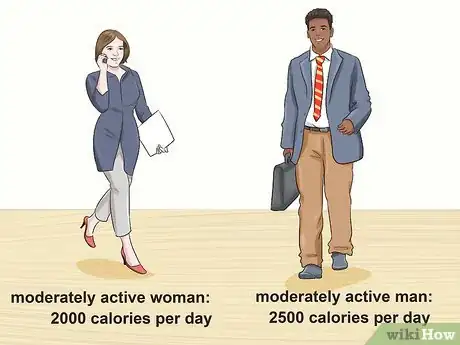
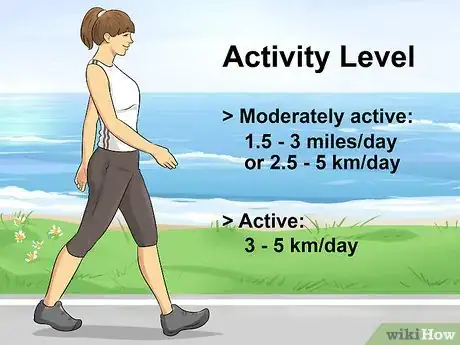
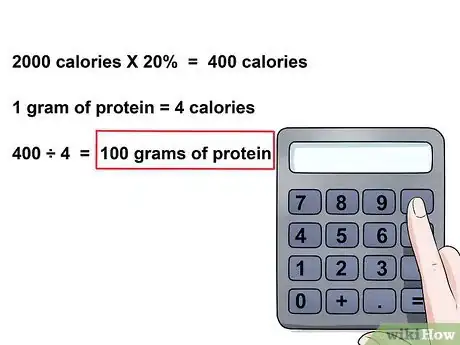
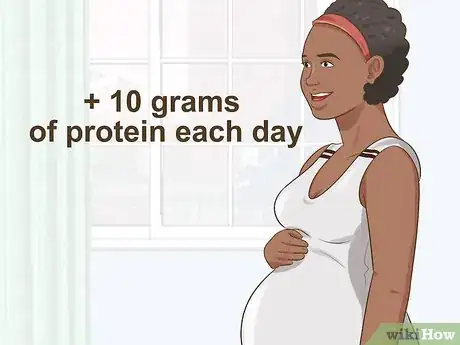
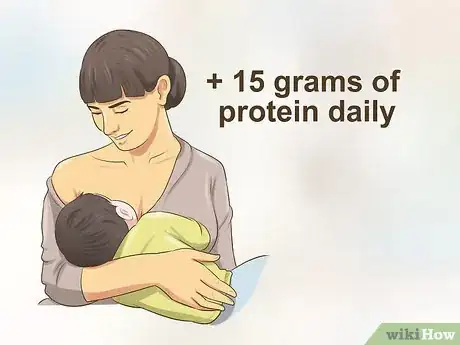
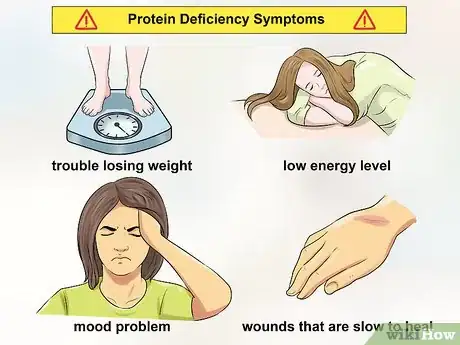
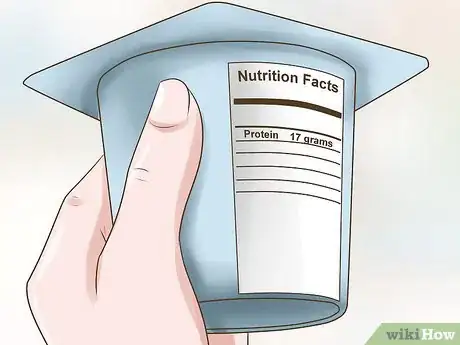
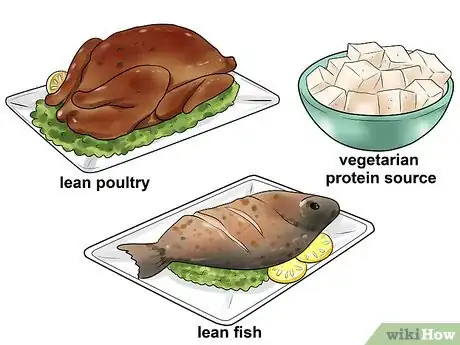

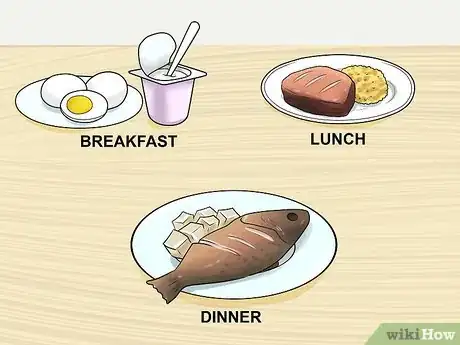
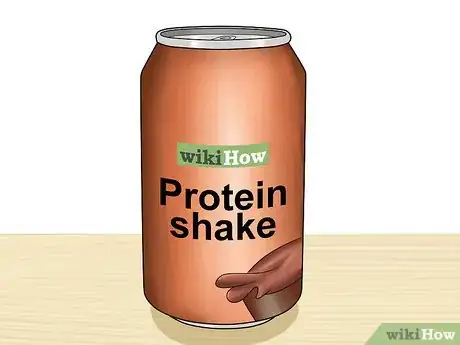
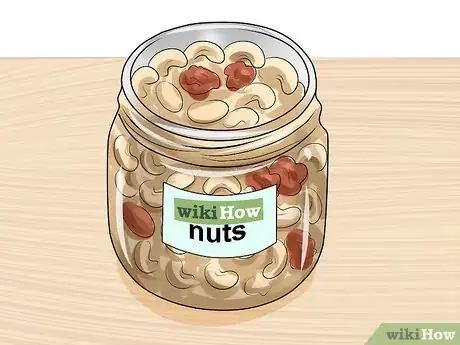
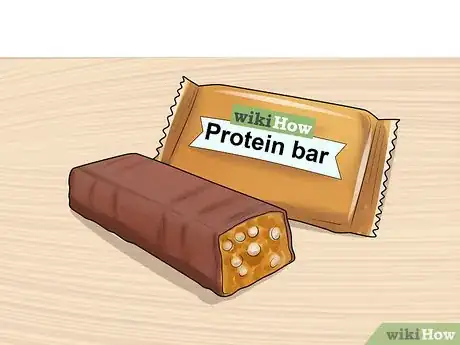

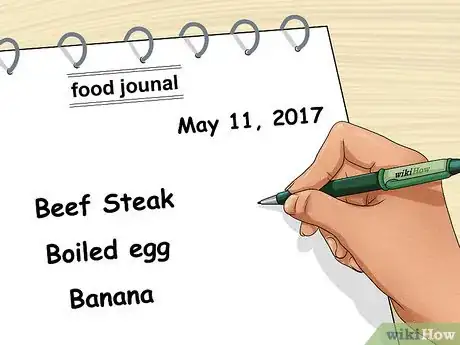
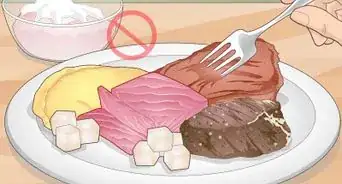

















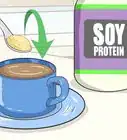





































Medical Disclaimer
The content of this article is not intended to be a substitute for professional medical advice, examination, diagnosis, or treatment. You should always contact your doctor or other qualified healthcare professional before starting, changing, or stopping any kind of health treatment.
Read More...